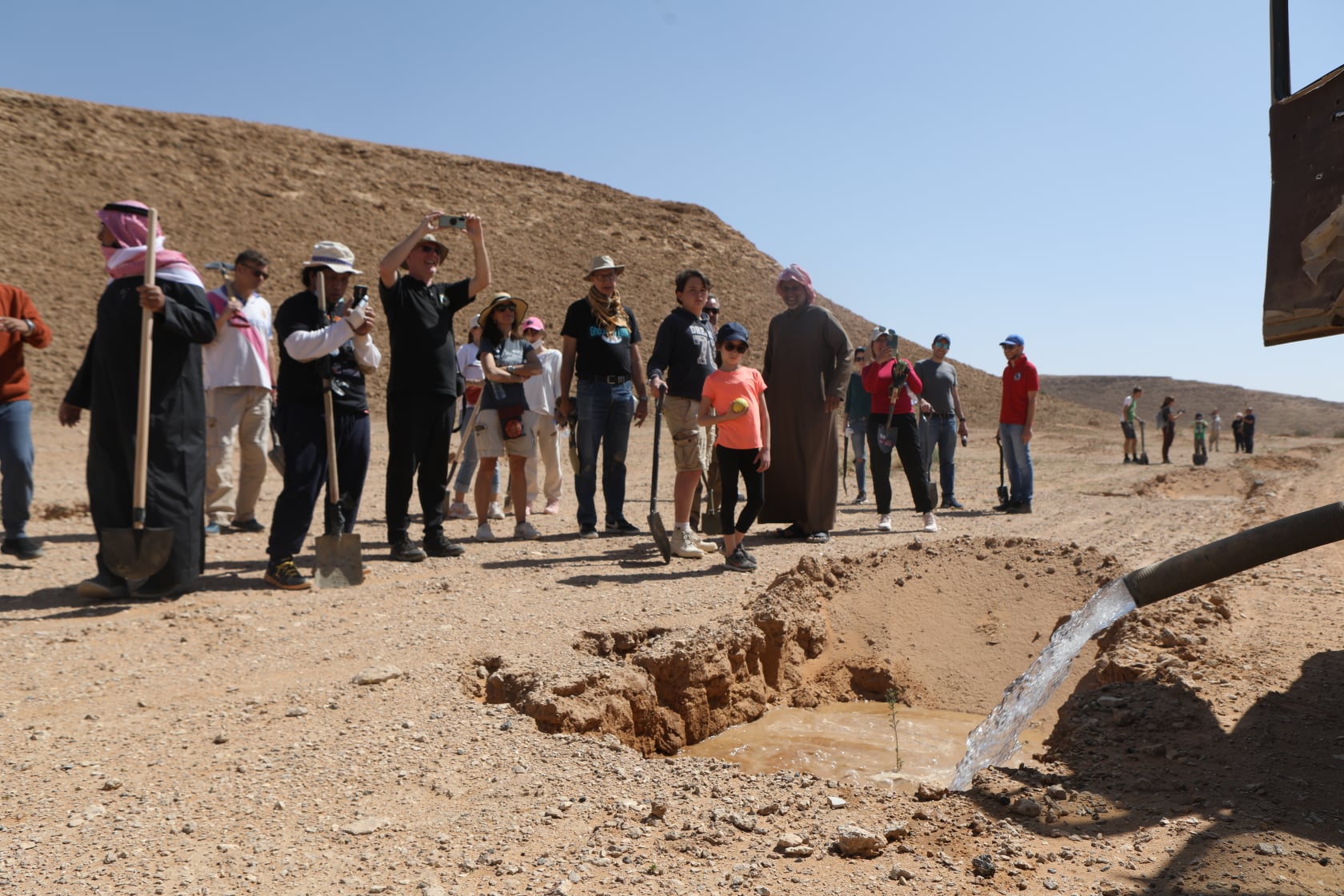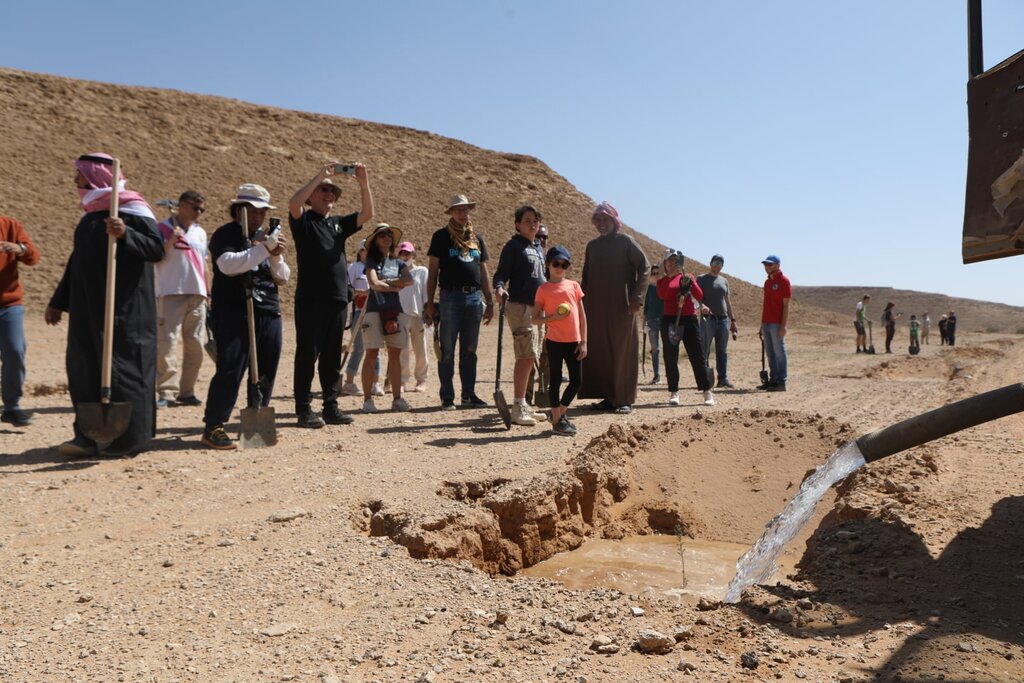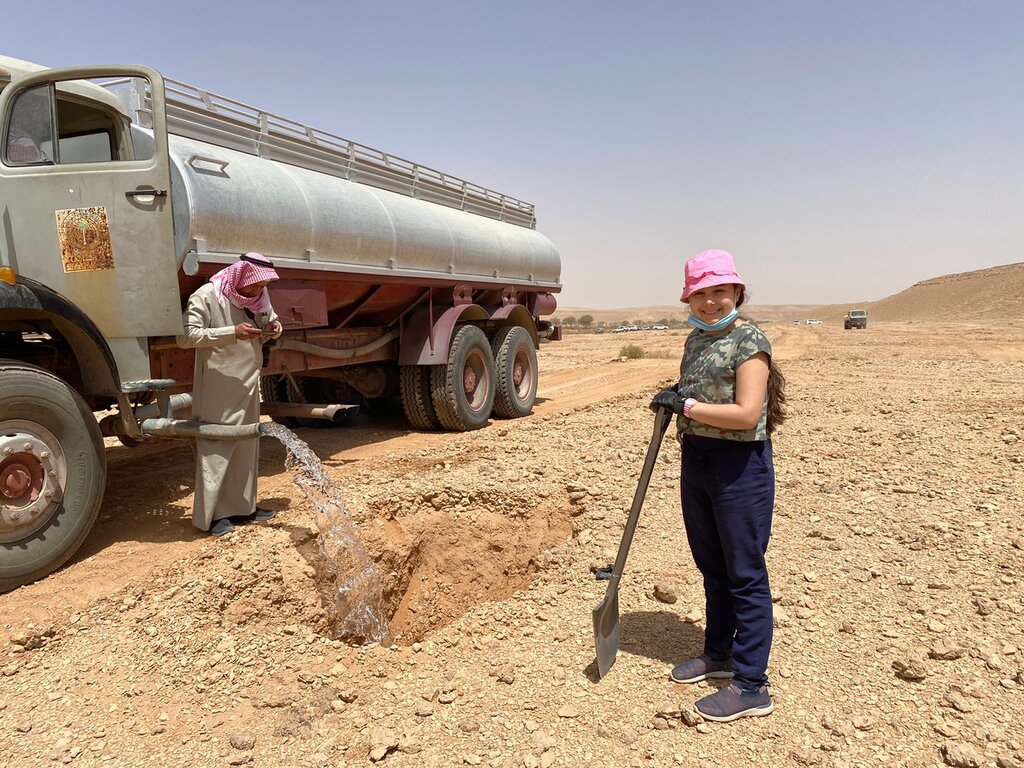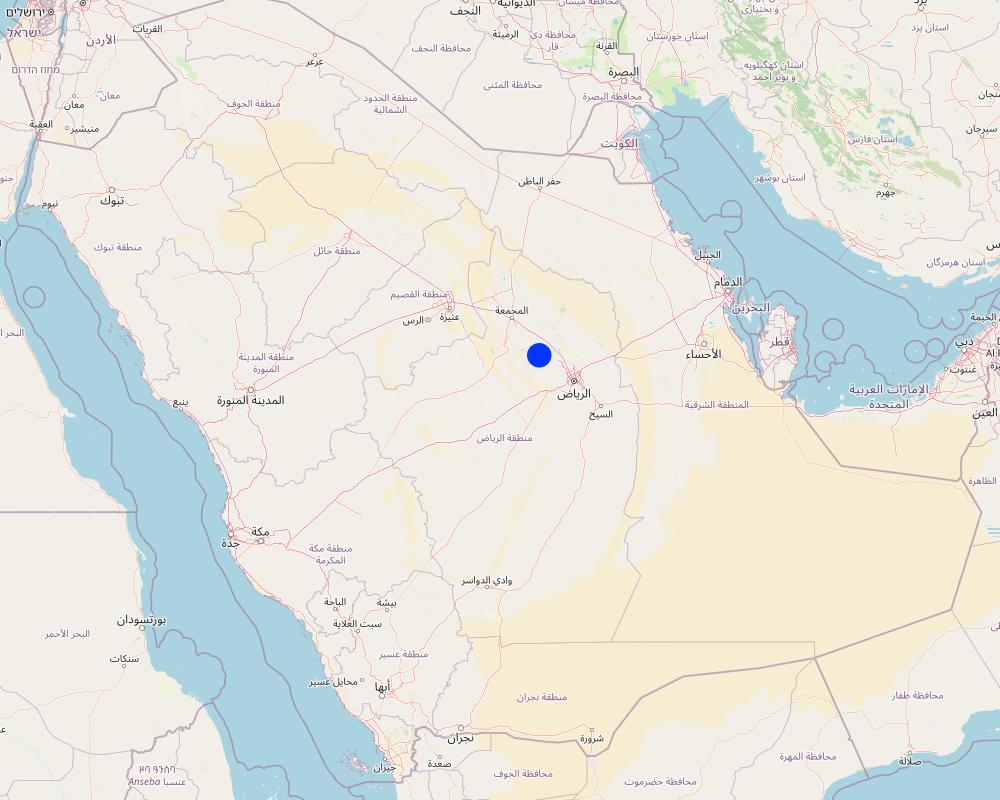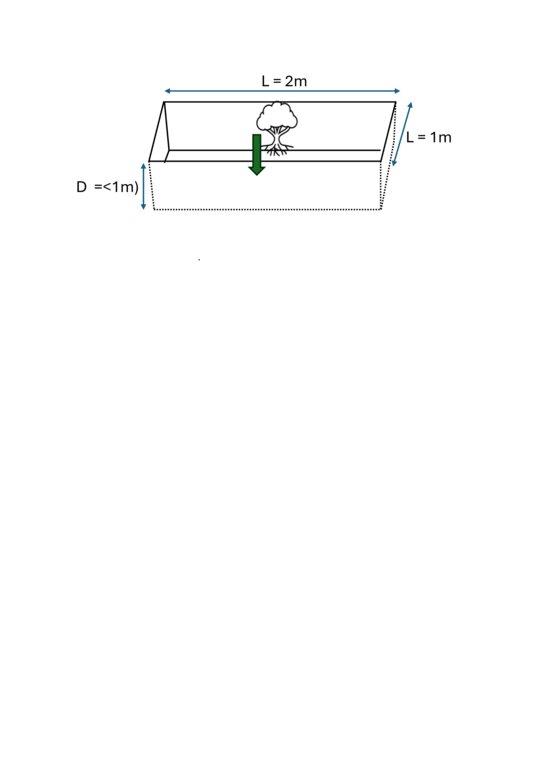Thadiq pits [Saudi Arabia]
- Creation:
- Update:
- Compiler: Eric Lacroix
- Editor: –
- Reviewer: William Critchley
Thadiq pits
technologies_7380 - Saudi Arabia
View sections
Expand all Collapse all1. General information
1.2 Contact details of resource persons and institutions involved in the assessment and documentation of the Technology
Name of the institution(s) which facilitated the documentation/ evaluation of the Technology (if relevant)
FAO Saudi Arabia (FAO KSA)1.3 Conditions regarding the use of data documented through WOCAT
The compiler and key resource person(s) accept the conditions regarding the use of data documented through WOCAT:
Yes
1.4 Declaration on sustainability of the described Technology
Is the Technology described here problematic with regard to land degradation, so that it cannot be declared a sustainable land management technology?
No
2. Description of the SLM Technology
2.1 Short description of the Technology
Definition of the Technology:
Thadiq pits are water harvesting structures which capture rainfall runoff for planting trees and shrubs. They can also be manually watered. Their size varies, but each Thadiq pit is approximately 2 metres x 1 metre wide and up to 1 metre deep.
2.2 Detailed description of the Technology
Description:
Thadiq pits are water harvesting structures which capture rainfall runoff for planting trees and shrubs. They can also be watered manually . The pits are dug within national parks managed by the National Centre for Vegetation Cover Development and Combating Desertification (NCVC). They may be located within wadis and sheyhib (small wadis) ranging from ten to several hundred metres in width, but also on high plateaux. Each Thadiq pit is rectangular, measuring 2m long, 1m wide, and up to 1m deep (depending on the depth of the soil). They are excavated by mechanical diggers. Pits are dug up to two years before planting, and they collect both runoff and the rich organic and mineral matter material carried in the runoff. After one year, many annual and even perennial plants have usually colonised the bottom of the pit. Trees and shrubs (including Acacia spp., Ziziphus spp. and Haxloylon spp.) are planting in the middle of the pit, without disturbing the existing vegetation as far as possible. These species attract bees, and beekeeping has been promoted alongside tree planting.
This water and nutrient harvesting technique is effective even in the very arid conditions – where rainfall may be less than 100 mm per year. However, some supplemental irrigation is needed, and each pit is watered, for example, around 7 times over the following year and a half, with a volume of water ranging from 20 to 100 litres each time per pit, depending on availability. Watering helps the plant to survive and the large quantity of water penetrates deep into the soil. As it moves downwards, it draws the roots downwards until they reach the water table. This is when watering can be stopped, often after 3 or 5 years. This is why the interval between watering is important, to effectively "pull the roots down" while leaving the plant enough water in the soil to survive. Although the costs are high, the results are generally very satisfactory in terms of planting and survival. The local impact is significant when there are enough pits per hectare, i.e. around 100 or more. Over the last five years one and a half million pits have been constructed. The technical design of the pits was formulated by Abdulla Al Eissa, the park manager, but FAO has been responsible for technical advising on planting operations. The activities are part funded by the NCVC, while local donors and volunteers contribute the remainder of the costs.
This activity is supported by the Food and Agriculture Organization of the United Nations (FAO), project: Strengthening MoEWA's Capacity to implement its Sustainable Rural Agricultural Development (SRAD) Programme (2019-2025) UTF/SAU/051/SAU.
2.3 Photos of the Technology
2.4 Videos of the Technology
Comments, short description:
https://vimeo.com/1026092452?share=copy
Date:
04/11/2024
Location:
Thadiq national park
Name of videographer:
Abdullah Al Eissa
2.5 Country/ region/ locations where the Technology has been applied and which are covered by this assessment
Country:
Saudi Arabia
Region/ State/ Province:
Riyadh Region (Province)
Further specification of location:
Thadiq National Park
Specify the spread of the Technology:
- evenly spread over an area
If the Technology is evenly spread over an area, specify area covered (in km2):
145.0
Is/are the technology site(s) located in a permanently protected area?
Yes
If yes, specify:
Thadiq National Park
Map
×2.6 Date of implementation
Indicate year of implementation:
2019
2.7 Introduction of the Technology
Specify how the Technology was introduced:
- through projects/ external interventions
Comments (type of project, etc.):
It is a project to develop vegetation to protect the environment in the National Parks and to support tourism in the region, partly financed by the NCVC (workmen's salaries, etc. ) and local donors (trucks, machines) and volunteers planting.
3. Classification of the SLM Technology
3.1 Main purpose(s) of the Technology
- reduce, prevent, restore land degradation
- conserve ecosystem
- preserve/ improve biodiversity
- create beneficial economic impact
- create beneficial social impact
3.2 Current land use type(s) where the Technology is applied
Land use mixed within the same land unit:
No
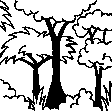
Forest/ woodlands
- (Semi-)natural forests/ woodlands
- Tree plantation, afforestation
(Semi-)natural forests/ woodlands: Specify management type:
- Non-wood forest use
Type of (semi-)natural forest:
- subtropical dry forest natural vegetation
Tree plantation, afforestation: Specify origin and composition of species:
- Mixed varieties
Type of tree plantation, afforestation:
- subtropical dry forest plantation
- subtropical dry forest plantation - Broadleaf
Type of tree:
- Acacia species
- Acacia tortilis
- Balanites aegyptiaca
- Ziziphus mauritiana
Are the trees specified above deciduous or evergreen?
- deciduous
Products and services:
- Nature conservation/ protection
- Recreation/ tourism
- Protection against natural hazards
3.3 Has land use changed due to the implementation of the Technology?
Has land use changed due to the implementation of the Technology?
- No (Continue with question 3.4)
3.4 Water supply
Water supply for the land on which the Technology is applied:
- mixed rainfed-irrigated
3.5 SLM group to which the Technology belongs
- natural and semi-natural forest management
- water harvesting
- beekeeping, aquaculture, poultry, rabbit farming, silkworm farming, etc.
3.6 SLM measures comprising the Technology
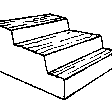
structural measures
- S4: Level ditches, pits
- S7: Water harvesting/ supply/ irrigation equipment
Comments:
with plantation
3.7 Main types of land degradation addressed by the Technology
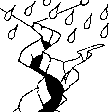
soil erosion by water
- Wt: loss of topsoil/ surface erosion
- Wg: gully erosion/ gullying
- Wo: offsite degradation effects
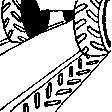
physical soil deterioration
- Pk: slaking and crusting
- Pu: loss of bio-productive function due to other activities
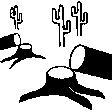
biological degradation
- Bc: reduction of vegetation cover
- Bh: loss of habitats
- Bq: quantity/ biomass decline
- Bs: quality and species composition/ diversity decline
- Bl: loss of soil life
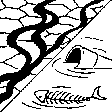
water degradation
- Ha: aridification
- Hs: change in quantity of surface water
- Hg: change in groundwater/aquifer level
- Hp: decline of surface water quality
- Hq: decline of groundwater quality
3.8 Prevention, reduction, or restoration of land degradation
Specify the goal of the Technology with regard to land degradation:
- reduce land degradation
4. Technical specifications, implementation activities, inputs, and costs
4.1 Technical drawing of the Technology
Technical specifications (related to technical drawing):
Each pit is 2 m long, 1m wide, up to 1m deep, spacing from 3 to 10 meters between structures in curved lines, or 3 meters apart in clusters. Watering with 20 to 100 litres depending on the availability and price of water and cost of transportation and watering. 100 pits minimum per hectare (maximum 1100, which is rare in this environment). One to three seedlings (tree, shrub, plant) per pit. Watering for example 7 times in 1.5 to 2 years, depending on the soil humidity.
Author:
Éric Lacroix,
Date:
04/11/2024
4.2 General information regarding the calculation of inputs and costs
Specify how costs and inputs were calculated:
- per Technology area
Indicate size and area unit:
hectare (with 100 pits)
Specify currency used for cost calculations:
- USD
Indicate average wage cost of hired labour per day:
50
4.3 Establishment activities
| Activity | Timing (season) | |
|---|---|---|
| 1. | Identify the site. | Dry season |
| 2. | Mark the pits with stakes | Dry season |
| 3. | Dig the pits | Dry season |
| 4. | Produce the seedlings in a nursery | Dry season |
| 5. | Plant the seedlings | Dry season |
| 6. | Watering the seedlings (and replacing the dead ones). | Dry season |
| 7. | Checking the pits during the first rain. | Rainy season |
| 8. | Checking the pits during or after floodings | Floodings |
4.4 Costs and inputs needed for establishment
| Specify input | Unit | Quantity | Costs per Unit | Total costs per input | % of costs borne by land users | |
|---|---|---|---|---|---|---|
| Labour | Technician | 100.0 | ||||
| Labour | Worker | 100.0 | ||||
| Equipment | Truck | 100.0 | ||||
| Equipment | Excavator | 100.0 | ||||
| Plant material | 100 seedlings per ha | 100.0 |
If you are unable to break down the costs in the table above, give an estimation of the total costs of establishing the Technology:
3000.0
If land user bore less than 100% of costs, indicate who covered the remaining costs:
NCDC and local donors as well as some volunteers
Comments:
All is given by the administration, National Centre for Vegetation Cover Development and Combating Desertification, free of charges.
4.5 Maintenance/ recurrent activities
| Activity | Timing/ frequency | |
|---|---|---|
| 1. | Checking the pits after the first rain. | One time, after the first rain. |
| 2. | Checking the pits after the floodings. | After the floodings. |
| 3. | Replace the seedlings when necessary: the watering truck driver get 5 seedlings everyday to replace dead plants. | During watering. |
| 4. | Watering with a truck, 20 to 100 litres per pit = 2,000 to 10,000 litre per ha. | 7 times in 1.5 year, during 3 to 5 years. |
4.6 Costs and inputs needed for maintenance/ recurrent activities (per year)
| Specify input | Unit | Quantity | Costs per Unit | Total costs per input | % of costs borne by land users | |
|---|---|---|---|---|---|---|
| Plant material | 30 seedlings per ha | 1.0 | 100.0 |
Comments:
The system is basically maintenance-free apart from tending to the plants, including watering
4.7 Most important factors affecting the costs
Describe the most determinate factors affecting the costs:
When supported by local donors and villagers, costs are relatively low. When the administration covers the cost, contractors are brought in and that makes it more expensive
5. Natural and human environment
5.1 Climate
Annual rainfall
- < 250 mm
- 251-500 mm
- 501-750 mm
- 751-1,000 mm
- 1,001-1,500 mm
- 1,501-2,000 mm
- 2,001-3,000 mm
- 3,001-4,000 mm
- > 4,000 mm
Specify average annual rainfall (if known), in mm:
71.00
Indicate the name of the reference meteorological station considered:
Internet
Agro-climatic zone
- arid
5.2 Topography
Slopes on average:
- flat (0-2%)
- gentle (3-5%)
- moderate (6-10%)
- rolling (11-15%)
- hilly (16-30%)
- steep (31-60%)
- very steep (>60%)
Landforms:
- plateau/plains
- ridges
- mountain slopes
- hill slopes
- footslopes
- valley floors
Altitudinal zone:
- 0-100 m a.s.l.
- 101-500 m a.s.l.
- 501-1,000 m a.s.l.
- 1,001-1,500 m a.s.l.
- 1,501-2,000 m a.s.l.
- 2,001-2,500 m a.s.l.
- 2,501-3,000 m a.s.l.
- 3,001-4,000 m a.s.l.
- > 4,000 m a.s.l.
Indicate if the Technology is specifically applied in:
- not relevant
Comments and further specifications on topography:
This technology is specific to the Thuwayq wadis and plateau
5.3 Soils
Soil depth on average:
- very shallow (0-20 cm)
- shallow (21-50 cm)
- moderately deep (51-80 cm)
- deep (81-120 cm)
- very deep (> 120 cm)
Soil texture (topsoil):
- coarse/ light (sandy)
Soil texture (> 20 cm below surface):
- coarse/ light (sandy)
Topsoil organic matter:
- low (<1%)
If available, attach full soil description or specify the available information, e.g. soil type, soil PH/ acidity, Cation Exchange Capacity, nitrogen, salinity etc.
Rocky limestone soils, sometimes sandy.
5.4 Water availability and quality
Ground water table:
5-50 m
Availability of surface water:
poor/ none
Water quality (untreated):
unusable
Water quality refers to:
ground water
Is water salinity a problem?
No
Is flooding of the area occurring?
Yes
Regularity:
episodically
Comments and further specifications on water quality and quantity:
One to three floodings a year.
5.5 Biodiversity
Species diversity:
- low
Habitat diversity:
- low
Comments and further specifications on biodiversity:
Arid ecosystems, sometimes rich for the region.
5.6 Characteristics of land users applying the Technology
other (specify):
Tourists
Market orientation of production system:
- commercial/ market
Relative level of wealth:
- very poor
Individuals or groups:
- employee (company, government)
Indicate other relevant characteristics of the land users:
The land user is the Government, National Centre for Vegetation Cover Development and Combating Desertification, to facilitate tourism and picnic in the park and protection of the environment (all genders and ages of tourists).
5.7 Average area of land used by land users applying the Technology
- < 0.5 ha
- 0.5-1 ha
- 1-2 ha
- 2-5 ha
- 5-15 ha
- 15-50 ha
- 50-100 ha
- 100-500 ha
- 500-1,000 ha
- 1,000-10,000 ha
- > 10,000 ha
Is this considered small-, medium- or large-scale (referring to local context)?
- medium-scale
Comments:
Sizes of National Parks
5.8 Land ownership, land use rights, and water use rights
Land ownership:
- state
Land use rights:
- open access (unorganized)
Water use rights:
- open access (unorganized)
Are land use rights based on a traditional legal system?
No
Comments:
National Park, government property
5.9 Access to services and infrastructure
education:
- poor
- moderate
- good
employment (e.g. off-farm):
- poor
- moderate
- good
Tourism:
- poor
- moderate
- good
Comments:
Tourism with guides and Tour operators
6. Impacts and concluding statements
6.1 On-site impacts the Technology has shown
Socio-economic impacts
Production
forest/ woodland quality
Comments/ specify:
Can double the vegetation cover in 10 year
Socio-cultural impacts
recreational opportunities
Comments/ specify:
Development of picnic and recreation once trees have grown
Ecological impacts
Water cycle/ runoff
water quantity
Comments/ specify:
Recharging the water table
surface runoff
groundwater table/ aquifer
Soil
soil moisture
soil cover
soil loss
soil accumulation
nutrient cycling/ recharge
Biodiversity: vegetation, animals
Vegetation cover
biomass/ above ground C
plant diversity
animal diversity
habitat diversity
Climate and disaster risk reduction
flood impacts
drought impacts
emission of carbon and greenhouse gases
micro-climate
Specify assessment of on-site impacts (measurements):
Expert estimates
6.2 Off-site impacts the Technology has shown
water availability
reliable and stable stream flows in dry season
downstream flooding
downstream siltation
Specify assessment of off-site impacts (measurements):
Expert estimates
6.3 Exposure and sensitivity of the Technology to gradual climate change and climate-related extremes/ disasters (as perceived by land users)
Gradual climate change
Gradual climate change
| Season | increase or decrease | How does the Technology cope with it? | |
|---|---|---|---|
| annual temperature | increase | well |
Climate-related extremes (disasters)
Meteorological disasters
| How does the Technology cope with it? | |
|---|---|
| local rainstorm | well |
Climatological disasters
| How does the Technology cope with it? | |
|---|---|
| drought | well |
Hydrological disasters
| How does the Technology cope with it? | |
|---|---|
| flash flood | well |
Comments:
The impact depends on the density of pits per hectare. - experimentation with spacing of 3 metres apart could be tested and evaluated for costs and the results.
6.4 Cost-benefit analysis
How do the benefits compare with the establishment costs (from land users’ perspective)?
Short-term returns:
negative
Long-term returns:
positive
How do the benefits compare with the maintenance/ recurrent costs (from land users' perspective)?
Short-term returns:
negative
Long-term returns:
slightly positive
Comments:
It depends on the case, but the success rate is generally very high.
6.5 Adoption of the Technology
- single cases/ experimental
Of all those who have adopted the Technology, how many did so spontaneously, i.e. without receiving any material incentives/ payments?
- 0-10%
Comments:
Costs paid by communities or administration.
6.6 Adaptation
Has the Technology been modified recently to adapt to changing conditions?
No
6.7 Strengths/ advantages/ opportunities of the Technology
| Strengths/ advantages/ opportunities in the land user’s view |
|---|
| 1) Radical change to the ecosystem |
| 2) Change of landscape. |
| 3) Attractive to tourists after 5 years. |
| Strengths/ advantages/ opportunities in the compiler’s or other key resource person’s view |
|---|
| 1). Adapting to climate change (rising temperatures, increased flash flooding). |
| 2). Necessary if we want to turn desert into forests and steppes. |
| 3). The best way to revegetate the desert. |
6.8 Weaknesses/ disadvantages/ risks of the Technology and ways of overcoming them
| Weaknesses/ disadvantages/ risks in the land user’s view | How can they be overcome? |
|---|---|
| High costs | Use climate change budgets or convince donors and the Government and Vegetation Centre to finance it. |
7. References and links
7.1 Methods/ sources of information
- field visits, field surveys
Many times during 3 years
- interviews with land users
The National Park manager
- interviews with SLM specialists/ experts
In the FAO office, climate change and forest experts.
Comments:
2021-2014 many times
Links and modules
Expand all Collapse allLinks
No links
Modules
No modules


